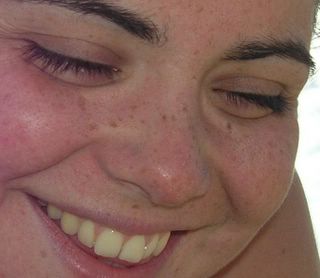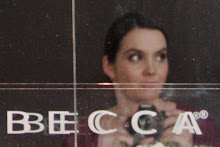EVS
European Voluntary Service
The European Voluntary Service (EVS) is part of the Youth programme, (http://europa.eu.int/comm/youth/program/index_en.html) a European Union programme that promotes the mobility of young people through international activities with a non-formal education dimension.
As a European Voluntary Service participant, I have a number of training sessions to attend throughout my time in Warsaw. For a few days at the end of May I met a number of European volunteers from all over Europe who are taking part in projects all over Poland. We discussed our projects, which vary from working in an intercultural meeting centre to grazing sheep at an environmental centre, and also our experiences of Poland so far.
EVS volunteers in Poland

Back row, left to right: Elvira Mirsalimova, Belarus;
Mickaël Michaud, France; Marta Brzezińska, Poland
(trainer); Antoine Vermeulen, France; Rebecca Steel,
UK; Pauline Delos, France.
Front row, left to right: Damir Holjevac, Netherlands;
Wojtek Szczepanik, Poland (trainer).
Multicultural Day in Warsaw
Park Skaryszewski
The sun was shining and the sky was a clear blue. Perfect weather for a day in the park. I made my way through the long grass towards the sound of music, accompanied by three young Kenyans I had met on the way while we were all getting lost on the twisting park paths.
Eventually, after stopping a couple of people and asking directions, we walked up a long path, the music getting ever louder, and came through gates to be greeted by a crowd of people watching a glittering and shimmying belly dancer performing on stage.
Event followed event onstage and although I was only able to stay for half the day, I was fortunate enough to see the energetic Chechen dancing, forceful Martial arts display and colourful Indian dancing.
The Chechen dancing involved a troupe of young dancers (from the very young 3-year-old couple to the other children of various ages up to the age of 15, to Malika and Movlat their teachers). The children displayed their skills in beautifully dressed couples, swirling and stamping their way around the stage. We were also treated to a solo display by Malika who moved with both strength and grace.
The martial arts display demonstrated a fascinating mixture of controlled movements that were strong and fluid. The group moved almost as one whilst demonstrating their routines and several solo demonstrations involved dangerous looking swords and knives.
The brightly coloured outfits of the Indian dancers matched the quirky movements and jangly music as they danced, accompanied at times by explanations of the various moves. It was beautiful to watch and full of humourous and interesting touches such as the flower petals that were flung into the air at the end of one piece.
Behind the stage area where the performaces were held, there was a space filled with tents offering different things from around the world. There was exotic food and drink (the Indian mango lassi was my favourite) as well as gifts and information. You could have your hair braided in the African tent, enjoy a kebab from the Arabian tent and even get past copies of the Voice of Exile from the information tent.
The crowd grew continuously and many languages could be heard around the tents and in the crowd. It is to be hoped that the event went some way to educating the local population as well as people from other countries about cultural variety from around the world, and with any luck the event will continue to grow in size and recognition in Warsaw.
Journeys in a New Homeland
Journeys in a New Homeland
My introduction to the Association for Refugees and Asylum Seekers in Poland came in the form of an eventful friday evening spent rehearsing for the upcoming production of ‘Journeys in a new Homeland’. The whole cast (including recent additions such as myself) were packed into the office of the association to run through the complete play. The script follows a journey which starts somewhere in Africa, accompanied by the sounds of the thumb piano and drums; through the scenes depicting characters from other parts of the world, involving other musical influences; to the emotional conclusion in which the pressure and strains of attempting to draw together the threads of her previous life and re-establish herself culminate in the lead character N’dolo N’juma’s insanity.
From the beginning I was impressed by the main characters’ enthusiasm for their roles; their energy and conviction was apparent even from that first run-through. As I followed the rehearsals and became more involved in the production myself, it was fascinating to watch how the characters evolved and how actors deepend their understanding of their roles as well as their lines. By the time came for curtain-up, we had rehearsed nearly every evening for the preceding week, we were in the newspaper and on the radio, and an eager crowd had assembled in the opera room of the Victoria Hotel to watch.
The performance was a great success. The audience’s attention moved from the beginnings of conflict between the two leading musicians in N’dolo N’juma’s homeland to her children’s abductions and an escalation of violence which prompts her fleeing. The hostility of her arrival in Europe was demonstrated in many ways. For example through the language barrier which leads to a miscommunication that almost snatches away N’dolo N’juma’s chance for a new life. The audience was shown the process of seeking asylum from a refugee’s eyes, thorugh a script that moves from being exceedingly funny at points to heartbreakingly sad at others. All this was accompanied by African drumming, European classical violin and Eastern guitar.
We played to a mixed audience of Polish and English speakers and everyone praised our achievements. Despite the play running for double the expected amount of time, the audience stayed seated until the very end and crowded backstage to congratulate the cast afterwards, even asking for autographs!
‘Journeys in a New Homeland’ was a valuable opportunity to educate people about the kinds of stories asylum seekers and refugees at the association have lived through. As well as raising awareness about the kinds of problems that so many people have lived through, it also clearly demonstrated the artistic capabilities of so many people involved with the association.
Portrait






